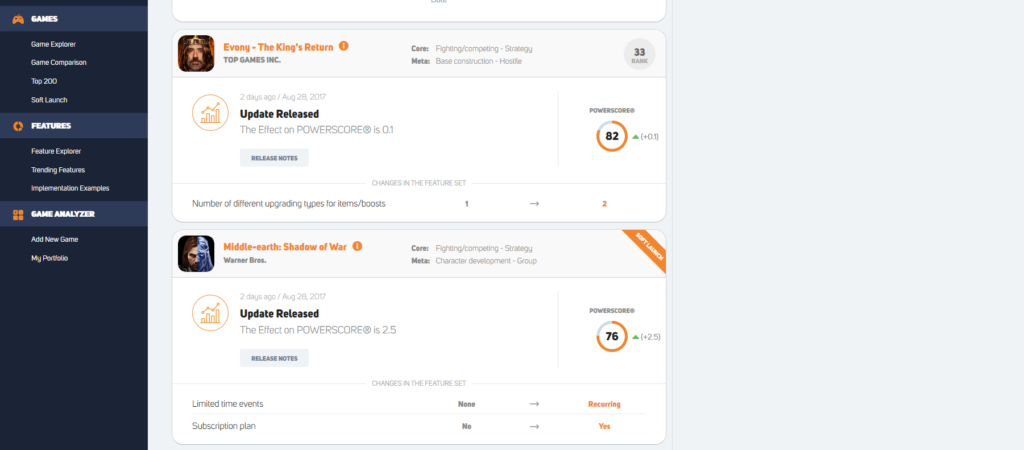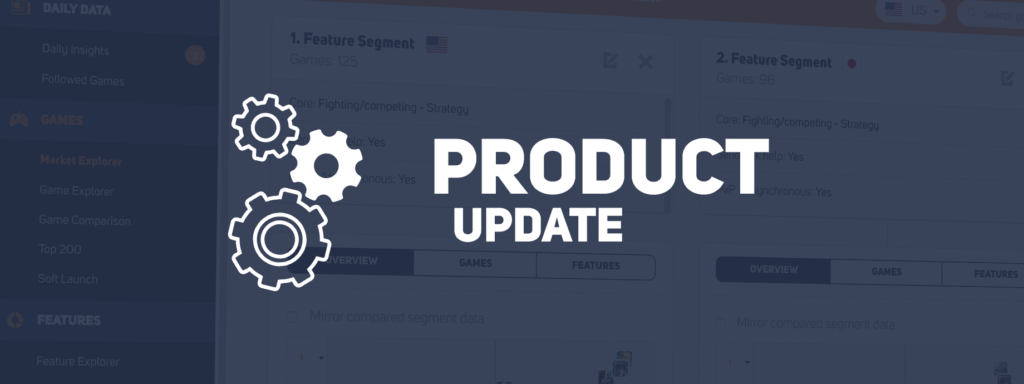Futureplay Games, best known for their brilliant view-to-play mobile entertainment model, has already launched two successful games “Build Away” and “Farm Away”, but show no signs of slowing down. They know that succeeding in the games industry is difficult, so although they like to “play fast, fail fast, pick up the pieces and move on fast”, they also know that integrating analytics into the development process makes it easier to stay ahead of the competition. We interviewed Camilo Fitzgerald, the Analyst at Futureplay Games to find out how the GameRefinery service has helped them inform their game development and updating processes.
How have you used the GameRefinery service at Futureplay games?
We’ve primarily used GameRefinery for the feature prioritization of game updates. It took us an hour to model our existing titles and get suggestions on which features are statistically most likely to improve revenue given our current feature set. After informing our roadmap we then use the tool to find similar games where these features are implemented most effectively. Many of which we are aware of already, but there are often a few surprises that help inform our design process.
What sorts of problems in game development does GameRefinery help solve?
Feature prioritization in games is currently quite subjective. It’s a significant amount of work to track feature changes across a range of games and evidence of their impact is usually based on hearsay or incomplete information. Even with a service like App Annie, the impact of a new feature is difficult to distinguish from marketing activities. GameRefinery provides solid analytical input into a process that so far has been largely based on incomplete information and gut.
Research on competitor features development is also time-consuming to do properly. Each update from competitors needs to analyzed and a subjective assessment made on how impactful the changes are. It’s a full-time job to keep track of even 10 or so games and during busy periods key feature updates are missed. GameRefinery solves this by providing notifications on the most effective competitor feature updates allowing more time to be spent developing games or keeping abreast of a wider set of competitors.

Which aspects of the GameRefinery service do you see as the most valuable?
GameRefinery’s analytical approach is not a replacement for good design and product management, but a powerful tool for informing these activities. The aspects we see as most valuable are feature prioritization in existing games, the discovery of competitor games where a specific feature has been implemented effectively, and keeping abreast of significant updates in competitors.
Is there any value you see in the multimarket side of the GameRefinery service?
We already have a good idea of what the most powerful feature trends in Western markets are. GameRefinery’s feature suggestion breakdown by market, however, allows us to discover especially low hanging fruit in Asian markets that we have less knowledge of. Further, the reference games save us time trawling through markets we’re not familiar with by directing us to the right games for the Asia-centric features we want to explore. Finally, new ‘killer features’ often surface in Asia before moving to the West we can keep abreast of trends that otherwise would require an Asia expert or consultant.
How does GameRefinery help you get ahead of the competition?
We value a lean process and a fast development cycle. Combining a traditional design approach to feature prioritization with GameRefinery’s analytical approach saves us time in expediting the elimination of low priority features and the prioritization of effective ones. Further, we can be more efficient with finding relevant feature implementations that aren’t within our design/product teams’ repertoire. This enables us to be faster at releasing better games and updates.






















